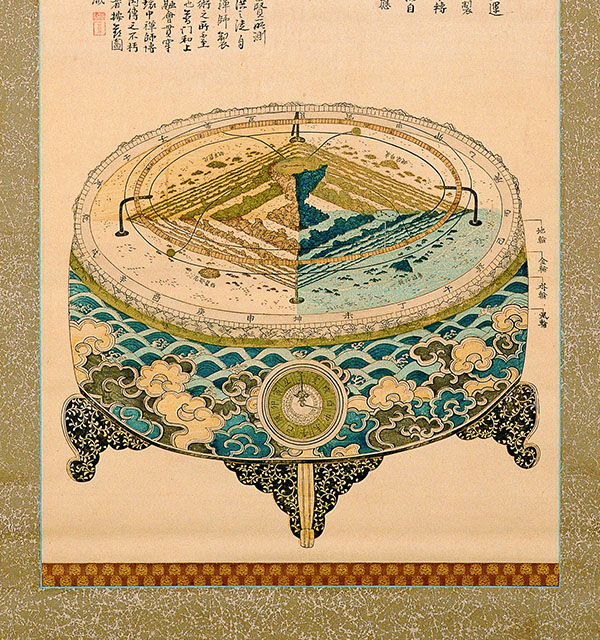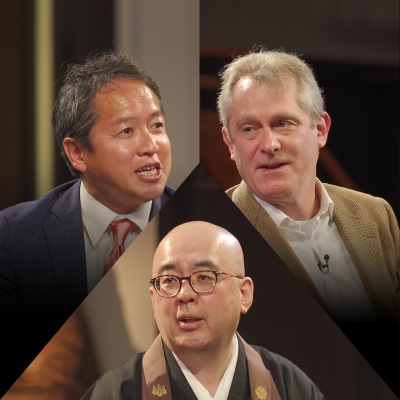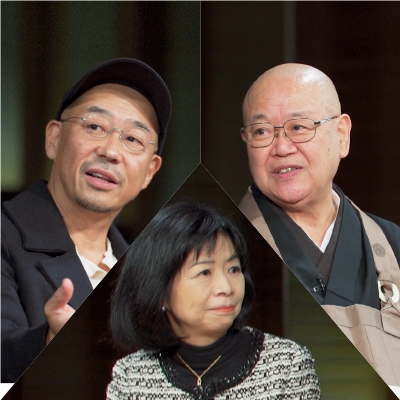
The History of Zen: Discovering the Roots of Sōtō Zen (22)
From Prof. KAGAMISHIMA Genryū’s Zengaku gairon kōgi nōto
(Introduction to Zen Studies Lecture Notes)
Fundamentally, Zen is a teaching of faith in the Buddha Nature仏性 we inherently possess, and aims at revealing and manifesting it. Fundamentally, Pure Land is a teaching of faith in Amitāyus Buddha阿弥陀仏 who is external to us, and aims at being saved by him. In Japan Zen and Pure Land are called the teachings of Self-power and Other-power, and are separate traditions. In China the two traditions integrated and a school called Pure Land Zen emerged. The view of Pure Land Zen is that Pure Land practice does not interfere with Zen, and Zen does not interfere with Pure Land practice.
This popularity of Pure Land Zen is a great change from the point of view of Tang and Song Dynasty Zen. Within the history of Pure Land Zen, two kinds of Pure Land practice are distinguished: Pure Land practice as visualization of Amitāyus Buddha観念, and Pure Land practice as reciting the name of Amitāyus Buddha唱念.
The Pure Land practice of earlier periods consisted of the visualization of Amitāyus Buddha. In later times this transformed to reciting the name of Amitāyus Buddha. The visualization practice is known from early times, and Pure Land Zen was being practiced in the time of the disciples of the Fifth Patriarch Hongren in the Tang Dynasty. It is not clear if Hongren himself was involved in Pure Land practice, but among his disciples Niutou Fachi (Jpn. Gozu Hōji牛頭法持, 635–702) and Zizhou1 Zhixuan (Jpn. Shishū Chisen資州智選(言偏+先), 609–702) both practiced Pure Land Zen. However, the Pure Land Zen of both Fachi and Zhixuan was not the recitation of the name of Amitāyus Buddha, but rather the mental visualization of the appearance of the Buddha during zazen. From the Yuan to Ming Dynasties this transitioned to reciting the name of Amitāyus Buddha during zazen.
The late Ming monk Yunqi Jianhong (Jpn. Unsei Shukō雲棲袾宏, 1535–1615) is famous as the representative of chanting the name of Amitāyus Buddha. Yunqi entered Mt. Yunqi雲棲山 in Hangzhou杭州 to found the Yunqi Monastery雲棲寺, and was active in reciting the Buddha’s name. It is reported that he had over 1,000 disciples. Yinyuan Longqi (Jpn. Ingen Ryūki隠元隆琦, 1592–1673), who established the Ōbaku School of Zen in Japan, taught the Pure Land Zen of Yunqi.
Pure Land Zen was extremely popular in China after the Yuan and Ming Dynasties. For that reason, while in the history of Japanese Buddhism Zen and Pure Land were not practiced together, in Chinese Buddhism Zen and Pure Land were integrated to become a single school. This is unlike the situation in Japan in which Zen or Pure Land were each transmitted separately without intermixing.

SPECIAL
ZEN,KOMAZAWA,MANAGEMENT
For our 5th discussion in this series we welcomed guest participant Mr. David Atkinson, CEO of Konishi Decorative Arts and Crafts, for a three-way dis・・・
2020.08.07

SPECIAL
ZEN,KOMAZAWA,MOVIE
For our fourth interview we welcomed film director Tatsushi Ōmori as our guest, and together with Komazawa University Chancellor Seishi Nagai and Prof・・・
2020.03.05

